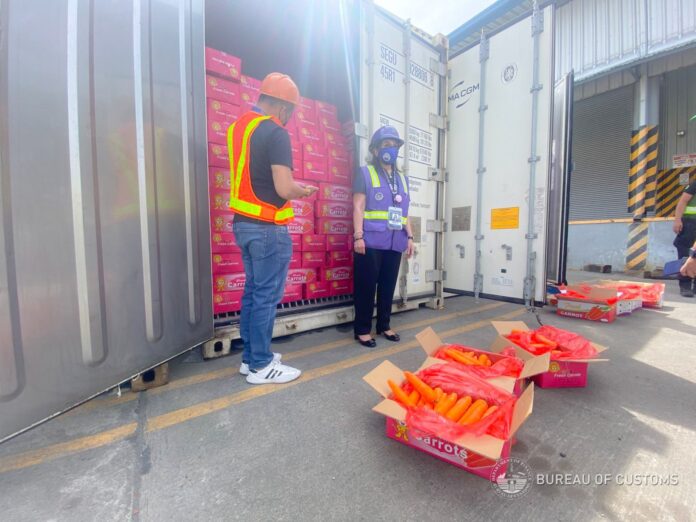-
The Department of Agriculture recommends full automation of trade transactions to help curtail smuggling of agricultural products
-
The DA database is not centralized so there is no way of monitoring imports
-
The Bureau of Customs said it has automated several processes while its major project—the Philippine Customs Modernization Program—is already being worked on with the World Bank
The Department of Agriculture (DA) recommends full automation of trade transactions to help curtail smuggling of agricultural products.
In a Senate hearing focusing on the smuggling of agricultural products on March 28, senators claimed high-ranking government officials, including unnamed politicians, are allegedly behind the illegal importation of vegetables from China.
DA and Bureau of Customs officials were questioned for their alleged failure to stop the smuggling, especially of onions, strawberries and carrots.
DA Assistant Secretary for the DA-Wide Field Inspectorate Federico Laciste, Jr. during the hearing tagged “big-time” personalities in the illegal trade, with “highly placed” individuals calling him to drop charges against suspected smugglers.
Queried on the identities of these individuals, Laciste offered to divulge their names in an executive session. He was instead asked to write them down.
One of the DA recommendations to stop smuggling is the full automation of trade transactions and monitoring, including a centralized database to monitor import and export processes and requests for inspection, Laciste said.
Since the DA database is not yet centralized, there is no way to monitor agricultural imports that have arrived against volume covered by sanitary and phytosanitary import clearances, he explained.
He said this is why data on agricultural imports between DA and the BOC do not tally.
BOC assistant commissioner Vincent Philip Maronilla, during the same hearing, asked DA if they base their data on actual import volumes or on actual import permits issued, some of which may not have been used. This, he said, may be where the discrepancy lies. The BOC, he noted, uses data from actual importations.
Maronilla said the BOC has already automated several processes even as the agency’s major project—the Philippine Customs Modernization Program—is being worked on with the World Bank.
“At this point, initial procurement of the initial stage of the Philippine Customs Modernization Project is already underway. Hopefully, after that, we will be able to start with the procurement process of the Customs Processing System which will replace our current system and will modernize it at par with other international standards together with the World Bank,” Maronilla said.
The World Bank in October 2020 signed the US$88-million loan for the project, which aims to achieve global standards and full modernization for BOC by 2025.
READ: World Bank approves $88M loan for BOC modernization project
Senate President Vicente Sotto III said strengthening inter-agency coordination is one of the recommendations of the Senate, noting there is much pinpointing among agencies as to who may be at fault for rampant smuggling.
He said all concerned agencies, particularly the DA and Department of Trade and Industry, should also have police powers and the authority to confiscate smuggled goods without needing prior coordination with BOC.





